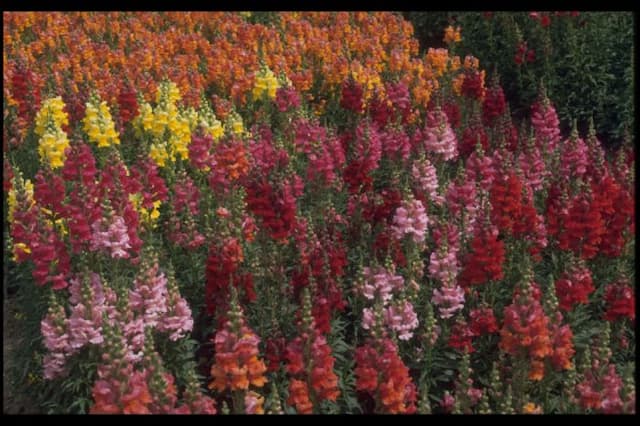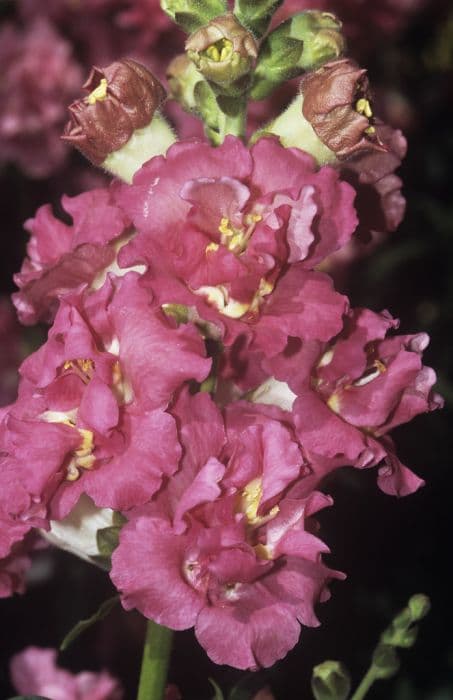Koromiko Hebe salicifolia

ABOUT
Hebe salicifolia, also commonly known as the willow-leaved hebe, is a plant with a distinctive appearance, primarily characterized by its foliage and flowers. The leaves of willow-leaved hebe are narrow and elongated, with a shape similar to that of willow leaves, as the name suggests. Their texture is glossy and they can have a light to dark green hue, sometimes with a slightly greyish tinge. The plant produces clusters of flowers that typically have a white to pale lilac color. These flowers are small and tubular, arranged in a dense, spike-like formation. The flowering period can add a touch of delicate beauty to the foliage, attracting various pollinators. This particular hebe has a bushy and densely leafed habit, and it is often praised for its resilience and evergreen nature, which means that the foliage remains on the plant throughout the year, providing continuous visual interest. The overall impression of the willow-leaved hebe is one of a sturdy and attractive plant that can lend both greenery and floral displays to garden settings without referencing its specific dimensions.
About this plant
 Names
NamesSynonyms
Willow Leaf Hebe, Shrubby Veronica
Common names
Veronica salicifolia, Hebe salicifolia var. communis, Hebe salicifolia var. paludosa, Hebe salicifolia var. tenella, Hebe salinga, Veronica salinga, Veronica salinga var. tenella.
 Toxicity
ToxicityTo humans
Hebe salicifolia, commonly known as Willow-leaved hebe, is not widely recognized as a poisonous plant to humans. There is limited information available regarding its toxicity. As with many plants, it is generally advisable to avoid ingesting parts of plants that are not known to be edible, as they can sometimes cause gastrointestinal upset or allergic reactions. However, specific symptoms of poisoning from the ingestion of Willow-leaved hebe are not well-documented. If ingestion occurs and any adverse reactions are noticed, it is recommended to seek medical advice.
To pets
Willow-leaved hebe is not typically listed as a toxic plant to pets. There is a lack of substantial evidence that suggests significant toxicity to dogs, cats, or other domestic animals when ingesting this plant. Nevertheless, individual animals may have varying sensitivities, and the consumption of non-food plants can sometimes result in gastrointestinal discomfort, such as vomiting or diarrhea. If a pet ingests Willow-leaved hebe and exhibits any unusual symptoms, it would be prudent to consult a veterinarian.
 Characteristics
CharacteristicsLife cycle
Perennials
Foliage type
Evergreen
Color of leaves
Green
Flower color
White
Height
6 feet (1.83 meters)
Spread
5 feet (1.52 meters)
Plant type
Shrub
Hardiness zones
8
Native area
New Zealand
Benefits
 General Benefits
General Benefits- Ornamental Appeal: Hebe salicifolia, commonly known as the 'Willow-leaved Hebe', adds aesthetic value to gardens with its attractive foliage and pretty white or pale lilac flower spikes.
- Wildlife Attraction: The flowers produce nectar and attract bees, butterflies, and other pollinators, enhancing the biodiversity of the garden.
- Low Maintenance: Willow-leaved Hebe is known for requiring minimal upkeep once established, making it a convenient choice for gardeners of all skill levels.
- Drought Tolerance: Once established, it can tolerate periods of dryness, which is beneficial in areas prone to drought or for water-wise gardening practices.
- Versatility in Landscaping: This plant can be used in various landscaping designs, including borders, hedges, and as a specimen plant, thanks to its bushy habit and evergreen nature.
- Coastal Gardening: Hebe salicifolia is suitable for coastal gardens as it can withstand salt spray and windy conditions, often prevalent in seaside locations.
 Medical Properties
Medical PropertiesThis plant is not used for medical purposes.
 Air-purifying Qualities
Air-purifying QualitiesThis plant is not specifically known for air purifying qualities.
 Other Uses
Other Uses- Hebe salicifolia, also known as Shrubby Veronica, can be used in floral arrangements due to its evergreen foliage and attractive flowers that add texture and interest.
- This plant offers shelter for small wildlife, such as beneficial insects and small birds, thanks to its dense growth habit.
- Shrubby Veronica is suitable for creating low hedges or border edging because of its compact and bushy nature which can be easily shaped.
- The wood of Hebe salicifolia can be used in crafting small wooden objects like buttons or decorative beads once dried and treated.
- Due to its resistance to salt spray, it is often planted in coastal areas to help reduce soil erosion and stabilize embankments.
- Gardeners may use cuttings of Shrubby Veronica to propagate new plants, making it an economical choice for large garden projects.
- The nectar and pollen-rich flowers are excellent for attracting pollinators such as bees and butterflies, supporting biodiversity in gardens and natural spaces.
- Shrubby Veronica can serve as a natural windbreak in windy areas, reducing wind speed and protecting more delicate plants.
- As an evergreen species, it provides year-round greenery even in winter, which helps to maintain visual interest in gardens during the colder months.
- Its leaves can be used as a natural mulch or compost material once shed, adding nutrients back into the soil as they decompose.
Interesting Facts
 Feng Shui
Feng ShuiThe Hebe plant is not used in Feng Shui practice.
 Zodiac Sign Compitability
Zodiac Sign CompitabilityThe Hebe plant is not used in astrology practice.
 Plant Symbolism
Plant Symbolism- Endurance: Hebe salicifolia, commonly referred to as the "Shrubby Veronica," is a plant known for its hardiness and ability to withstand different environments, symbolizing the capacity to endure life’s challenges.
- Youth: Named after Hebe, the Greek goddess of youth, this plant represents the youthful spirit and the idea of staying young at heart.
- Vitality: With its evergreen leaves and often vibrant flowers, the Shrubby Veronica is seen as a symbol of vitality and an energetic life force.
- Protection: The robust nature of this shrub implies protection, acting as a natural guardian through its resilient presence in a garden.
- Renewal: The perennial nature of the Hebe salicifolia signifies renewal, as it comes back each year, reminding us of the renewal and regeneration processes in life.
 Water
WaterThe Hebe, also known as Shrubby Veronica, should be watered deeply but infrequently, allowing the soil to slightly dry out between waterings. In general, watering once a week with 1-2 gallons of water should suffice, but this can vary depending on the climate and the season. During hot, dry periods, you may need to water more frequently, while in cooler, wetter months, you can reduce the frequency. Ensure the water penetrates the soil to reach the root zone; shallow watering is less beneficial. Overwatering can lead to root rot, so it’s important to ensure good drainage and adjust your watering schedule based on rainfall and temperature changes.
 Light
LightShrubby Veronica thrives in a spot where it can receive full sun to partial shade. Best light conditions are achieved with exposure to at least six hours of sunlight a day. An east-facing or west-facing garden is ideal, providing the Hebe with morning or afternoon sun. However, in extremely hot climates, some afternoon shade can help prevent leaf scorch.
 Temperature
TemperatureShrubby Veronica prefers a temperate climate and can tolerate a range between 30°F and 80°F. Frost can be detrimental to the plant, so it's important to provide protection if temperatures are expected to dip below freezing. Ideal growing conditions for Shrubby Veronica are temperatures consistently ranging from 60°F to 70°F. During periods of extreme heat or cold, additional care may be necessary to maintain plant health.
 Pruning
PruningShrubby Veronica benefits from pruning to maintain its shape, encourage bushier growth, and enhance flowering. Prune lightly in the early spring, removing any damaged or dead branches and shaping the plant as desired. Additionally, after flowering, trim back the flower stems to encourage a second bloom. The best time for major pruning is after the last frost, in late spring.
 Cleaning
CleaningAs needed
 Soil
SoilThe best soil mix for Shrubby Veronica (Hebe salicifolia) should be well-draining with a mix of loam, peat, and sharp sand. An ideal soil pH range is slightly acidic to neutral, around pH 6.0 to 7.0.
 Repotting
RepottingShrubby Veronica (Hebe salicifolia) should be repotted every 2-3 years to ensure fresh soil and adequate room for growth.
 Humidity & Misting
Humidity & MistingShrubby Veronica (Hebe salicifolia) prefers moderate humidity but is quite adaptable to different humidity levels typical of outdoor environments.
 Suitable locations
Suitable locationsIndoor
Place in bright indirect light and keep in cool temps.
Outdoor
Plant in sun to partial shade, shelter from harsh winds.
 Life cycle
Life cycleHebe salicifolia, commonly known as Willow leaved hebe, begins its life as a seed which, once sown in well-draining soil and given appropriate water and temperature conditions, will germinate. Seedlings emerge and establish a root system, followed by the growth of foliage, which is characterized by long, narrow leaves. As the plant matures, it enters the vegetative stage, growing sturdier stems and more leaves. Upon reaching maturity, Willow leaved hebe produces flowers—usually in summer—that are typically white or pale lilac, arranged in dense racemes. Following pollination, these flowers develop into small capsules containing seeds, which when mature, are dispersed to begin a new cycle. Throughout its life cycle, Hebe salicifolia may undergo pruning to maintain its shape and encourage thicker growth, and it requires protection from frost and overly wet conditions.
 Propogation
PropogationPropogation time
Spring to early summer
The most popular method of propagating Hebe salicifolia, commonly known as the Willow-leaved Hebe, is through semi-hardwood cuttings. This typically takes place during the summer months when the plant’s growth is vigorous. To propagate, a grower would cut a piece of stem about 4 to 6 inches (10 to 15 centimeters) long, ensuring the cutting has a few leaf nodes. The lower leaves are stripped, and the base of the cutting is treated with a rooting hormone to facilitate root development. The prepared cutting is then inserted into a mixture of perlite and peat moss, or a similar well-draining propagation medium. The cutting should be kept in a warm, humid environment with indirect light to encourage rooting, which usually takes several weeks. Once rooted, the new Hebe salicifolia can be potted up and gradually acclimatized to outdoor conditions.





![Snapdragon [Pretty in Pink]](/_next/image?url=https%3A%2F%2Fplants-admin.emdemapps.com%2Fimages%2Fplants%2F%2Fimages%2F604b5cb3b5385.png&w=640&q=75)



